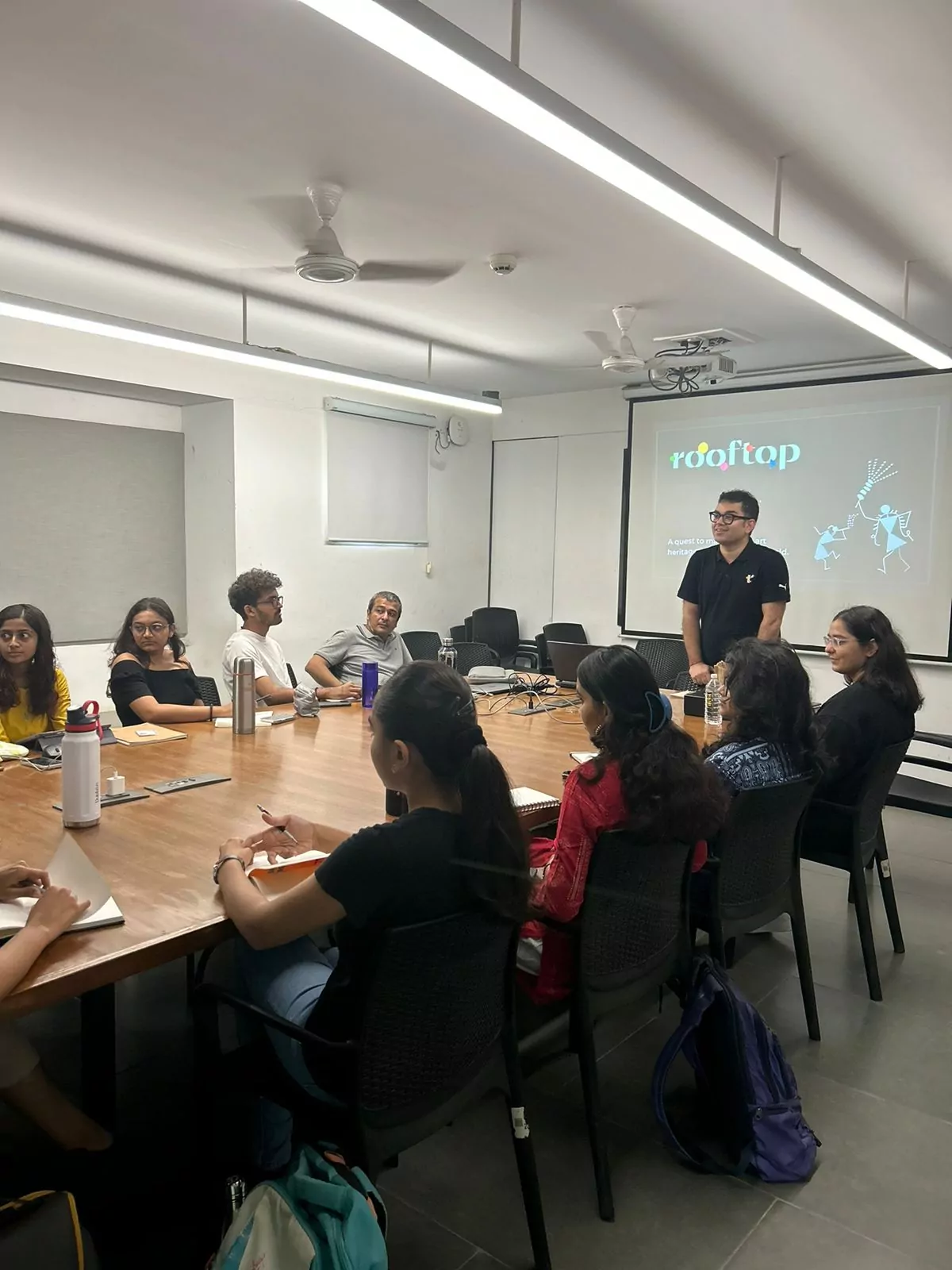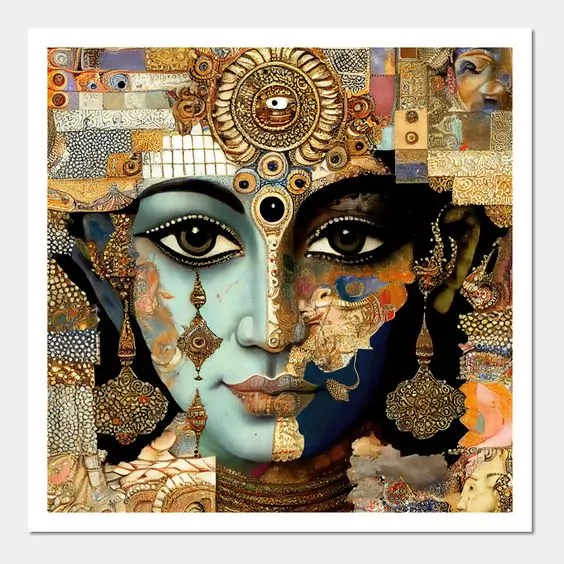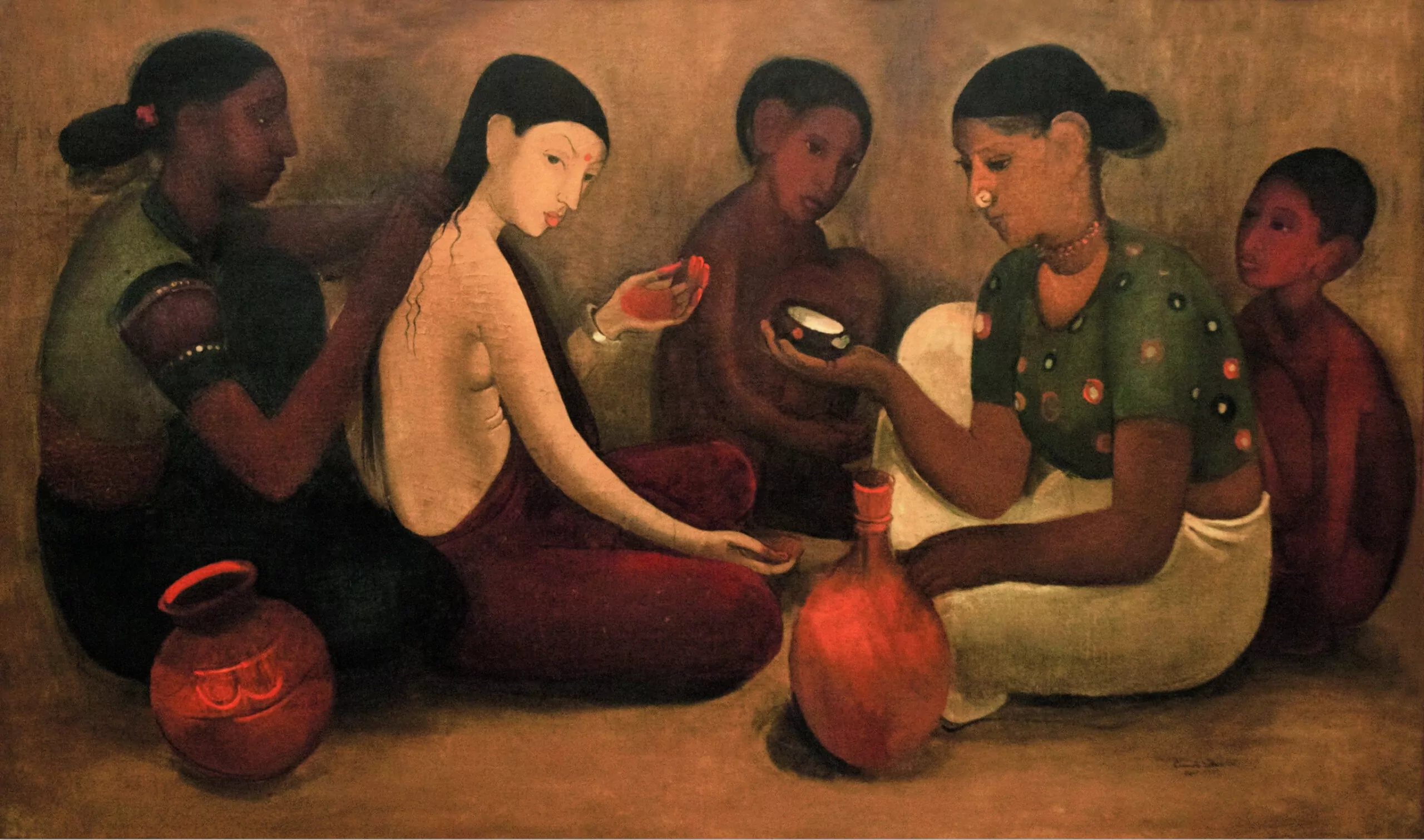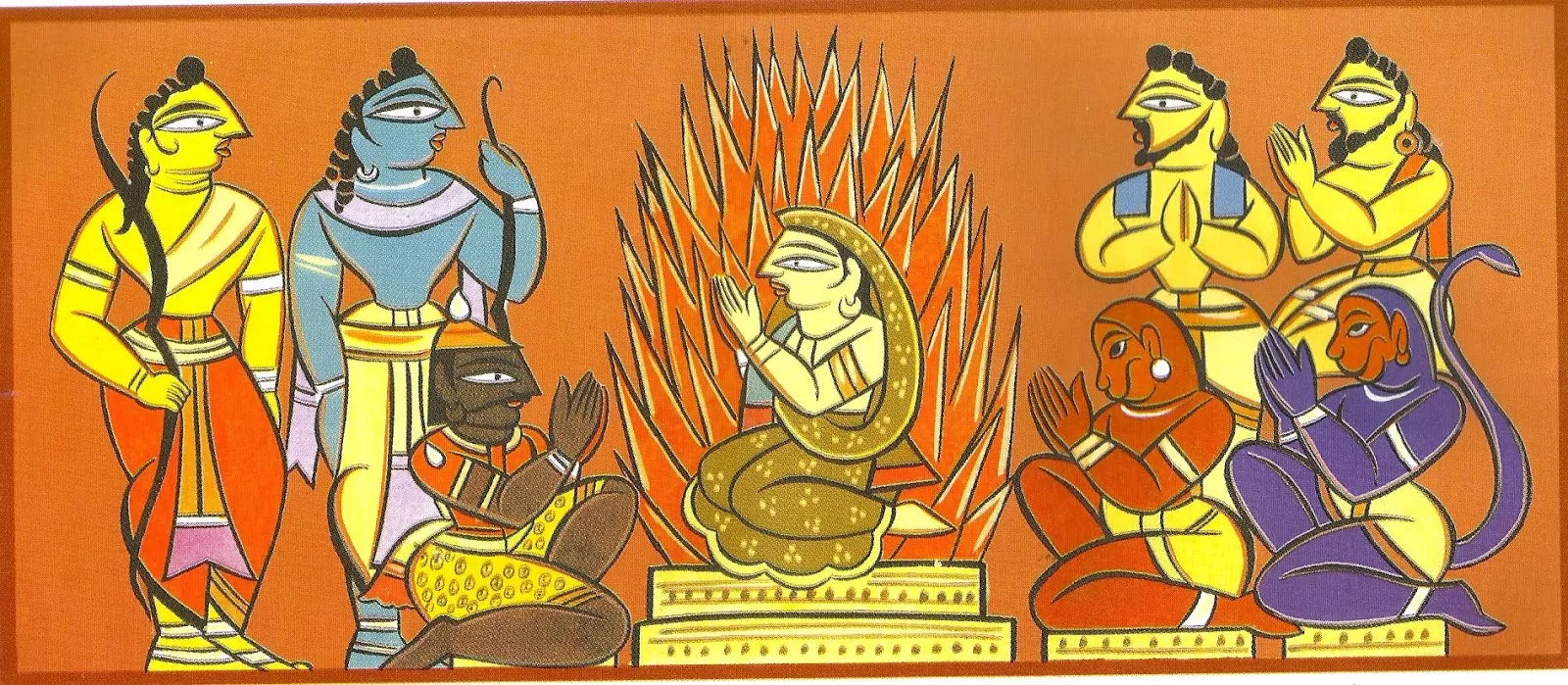Indian Art Heritage And Its Importance
College life is filled with new and exciting experiences. Kartik Gaggar, CEO and Founder of Rooftop and Rajasthan Studio, delivered one such experience to the students of CEPT University, Ahmedabad. He spoke about his journey in the preservation of Indian art heritage and how it culminated in the establishment of the e-learning platform Rooftop.
A Captivated And Inquisitive Audience
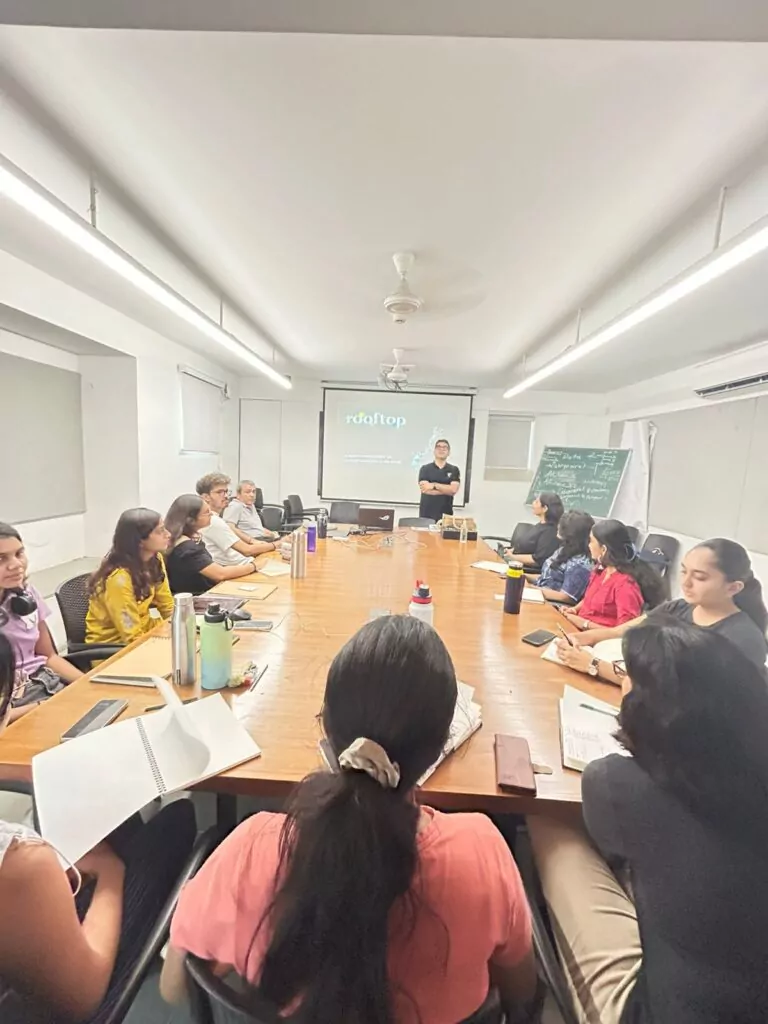
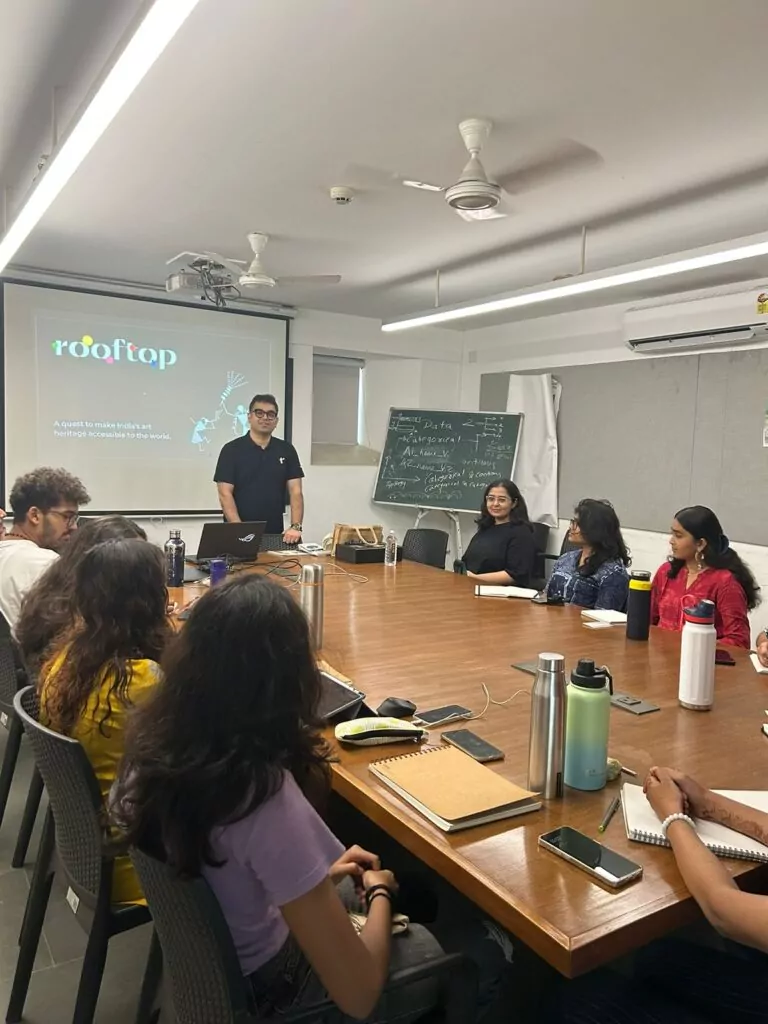
The fresh faces of CEPT’s 2nd-year batch of Interior Design students filled the room and thus began a fun-filled session filled with interaction and knowledge. This audience of young, creative minds was ready to soak up knowledge and apply it to their own lives. Learning Indian art forms can do wonders for creative professionals and those working in similar fields. It opens up a whole new world of skills and designs that you can implement in your artistic endeavours. The students of CEPT University recognised this, and their like-minded approach to art enabled them to understand Rooftop’s mission. Kartik began by introducing himself. He discussed how his previous business experiences aided him in the development of the art-learning platform Rooftop.
Rooftop: An Endeavour To Showcase Indian Art Heritage To The World
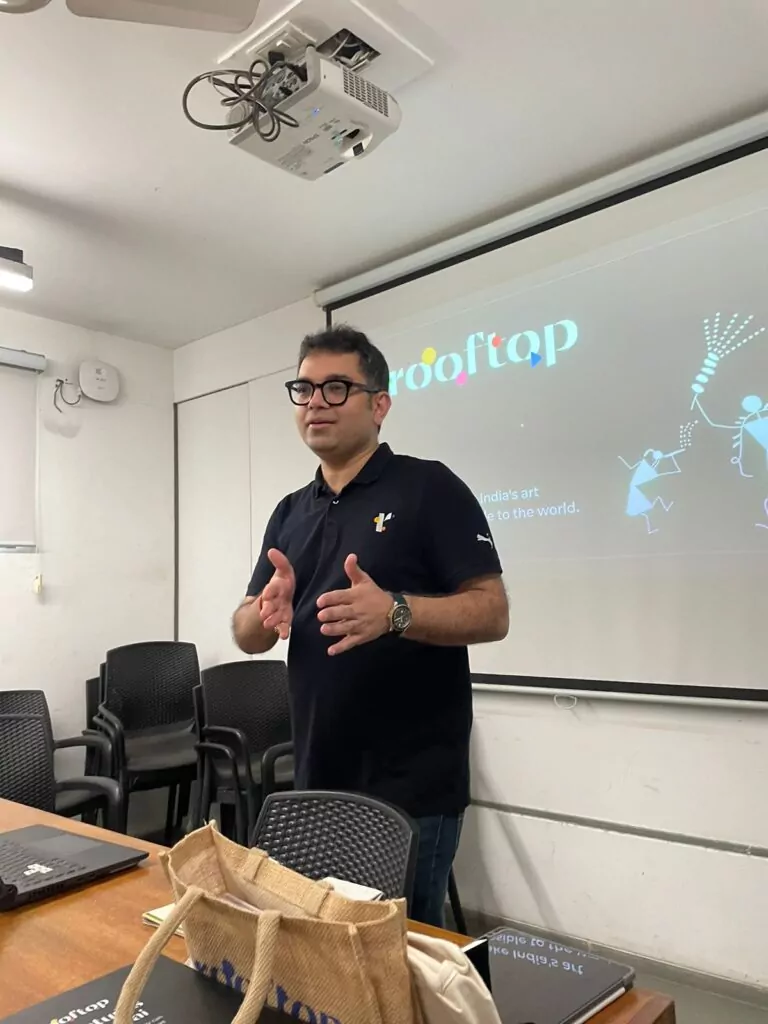
Kartik honed his business skills as a Chartered Accountant at Price Waterhouse (PwC). Despite his business background, he found himself inexplicably drawn to the arts. He spoke about how meeting up with artists, travelling to places, and exploring the rich cultural heritage of traditional art forms felt like second nature to him. He realised that artists did not have many incentives to keep practising traditional art forms. To preserve Indian art heritage and tradition, it was necessary to make traditional art forms profitable for the artists and accessible to the audience.
Also read: How Rooftop is Bringing Back Value to Authentic Indian Art Forms
Rooftop’s Vision To Preserve Indian Art Heritage
Rooftop’s vision is to make traditional Indian art accessible to everyone. You will no longer have to travel to faraway places to learn about folk and tribal art forms. Kartik shared stories about several of Roofop’s ventures. ‘Art baje’ was one of Rooftop’s ideas centred around curating the right experience. Eight p.m, eight artists, and sixty-four minutes of immersive artistic expressions. Participants watch the master artists at work, while music and conversation create the perfect atmosphere. It’s an experience that every art lover dreams of!
The Circle Community-Creativity Through Collaboration
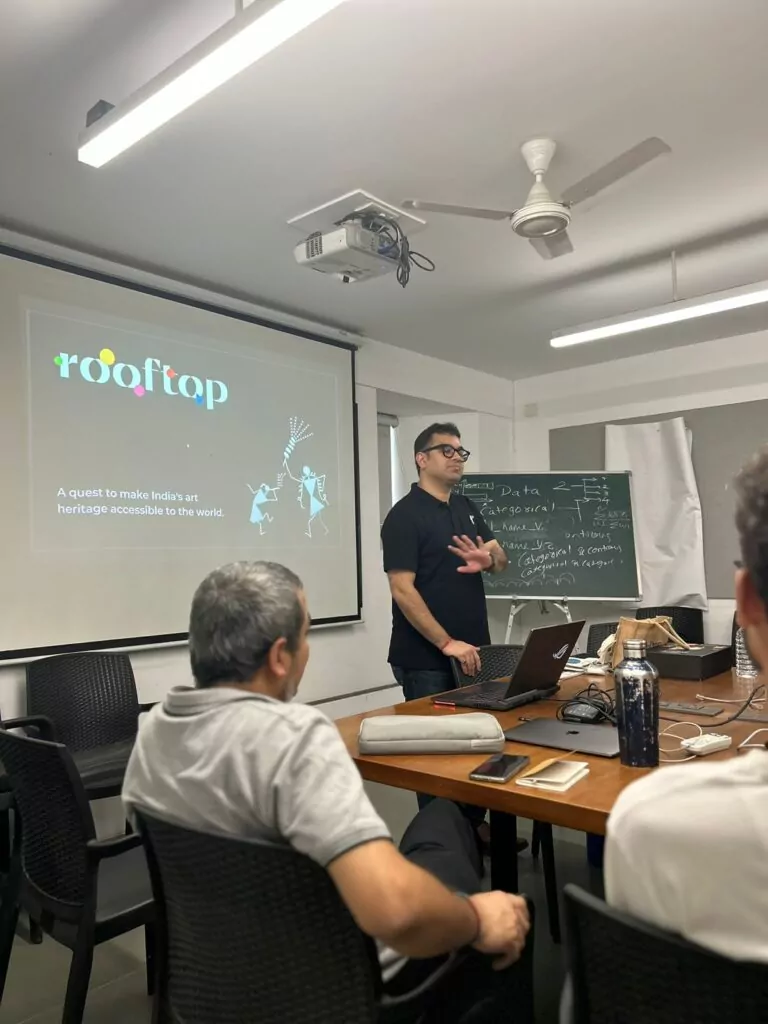
The pandemic temporarily halted in-person art experiences. However, Kartik ingeniously navigated the situation and found an excellent solution. Why not create a classroom that is connected to its roots but not restricted by them? And that’s how we made the transition to the virtual medium. Kartik’s revolutionary idea became a reality through research, hard work, and dedication.
The Circle Community had formerly been established as an exclusive community of artisans, operating on an invite-only basis. With the help of the right team and the right technology, Rooftop managed to create a one-of-a-kind community of more than 2100 artists. We have now hosted over 700+ art experiences for more than 25,000 attendees from 20+ countries across the globe.
Bringing A Customer-Centric Approach To Curated Art Experiences
Everybody loves art, but not everyone wants to learn it. Some people want to learn about it, some want to look at it, and some want to buy it. Kartik explained that Rooftop places the customer at the centre of its operations. Our courses and workshops attract a varied clientele, ranging from creative professionals to hobby artists to complete beginners in the world of art. We place a lot of emphasis on providing a satisfactory experience. Is the customer finding value in this course? Rooftop always asks customers what they expect and does its best to make sure it delivers.
Kartik mentioned a recent conversation he had with a faculty member from Surat. She observed that taking courses as a teacher had helped her understand everything from a student’s perspective. Her introduction to new art forms could have been overwhelming, but Rooftop’s careful curation of course material and the expertise of the instructors made the process much easier for her. Each of Rooftop’s Maestro courses has been specially designed to provide learners with a holistic understanding of a traditional Indian art form. You will not just learn to draw and paint but also understand the cultural significance behind the motifs and designs of Indian art forms.
Empowering Artists Through The Preservation Of Indian Art Heritage
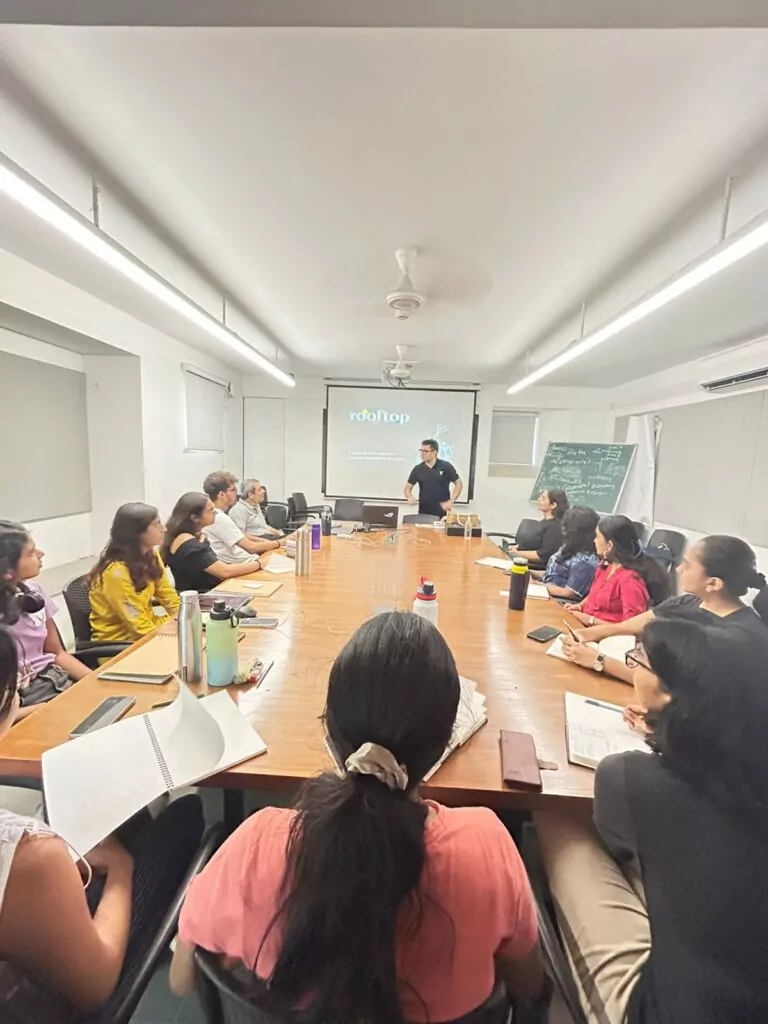
Kartik defined how Rooftop currently has no competitors: We understand that learners want the best, customised experience for themselves. That’s why we employ master artists with years of expertise to teach our courses. These Maestros are artists of national and international acclaim and recipients of awards such as the prestigious Padma Shri.
A student from the audience shared that she had recently completed a baking course that cost her a pretty penny—Rs. 12,000, to be exact. The cost made her determined to put her skills into action, so it didn’t feel like nothing had come out of her investment. She began selling cakes and baked goods and was met with success. This made her feel validated as an artist and restored confidence in her skills. Art is a practical venture; you cannot just talk about it. Rooftop understands that art is essential as a means of expression. This led us to create courses and workshops specifically designed to put skills into practice. After finishing one of Rooftop’s Maestro courses, you can share your art with the community and even begin teaching traditional art forms.
Also read: 3 Reasons Why Rooftop’s Maestro Course is your Golden Ticket to Learn Indian Art!
It’s Never Too Late To Learn Traditional Art Forms
You may worry that learning Indian art forms may not have a practical application, but this could not be further from the truth. Indian art forms have always been popular commercially. Kota, Madhubani, and Kalamkari-patterned sarees are available at every store that sells Indian clothing. Did you know that traditional artists are changing their methods to adapt to the modern market? Traditional art forms are now used to decorate coasters, handmade trinkets, crockery, clothes, and home decor. Rooftop is working towards changing people’s views towards these art forms by reintroducing them from a modern perspective.
Kartik then discussed the current state of Indian traditional art with the students. In a bid to preserve Indian heritage, the government as well as organisations like Rooftop are working towards introducing traditional art to the general population. Ancient Indian art forms are not a thing of the past. Today, Rooftop’s Maestro courses enable everyone to access Indian folk and traditional art forms anytime and anywhere. Kartik concluded his presentation by detailing how Rooftop’s courses aid in the preservation of traditional Indian art while supporting the livelihood of local and tribal artists.
Download the Rooftop App from GooglePlay or AppStore to play your part in preserving Indian art heritage!
Discover us on Instagram @rooftop_app for all things on folk and traditional Indian art forms.
By Melissa D’Mello

